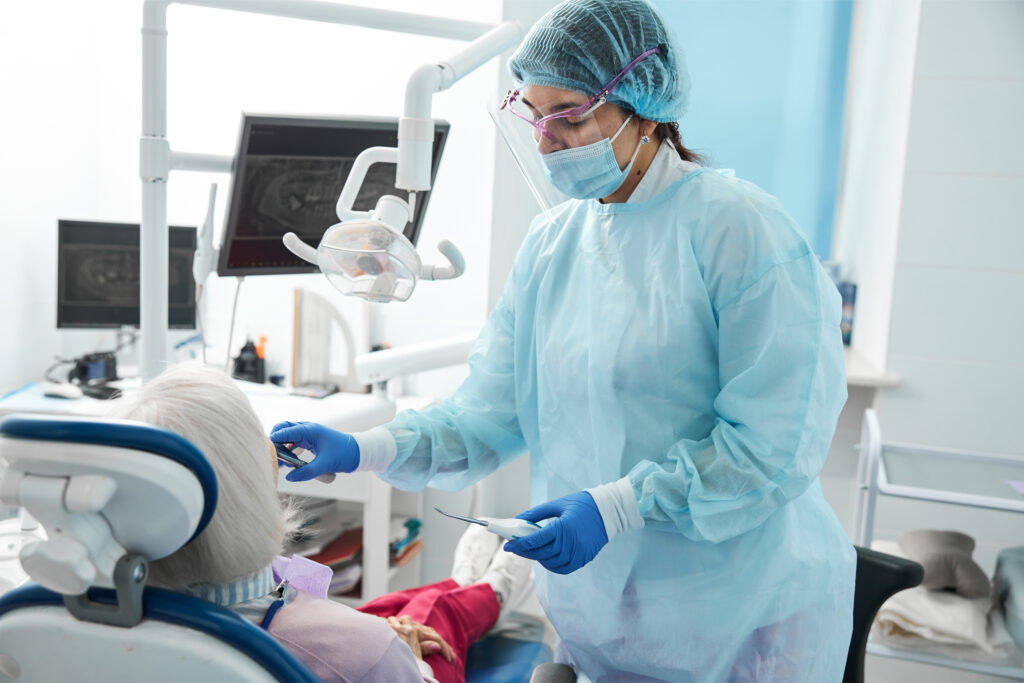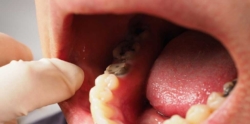A dentist’s office contains several instruments, each with a specific function during dental procedures. The dental elevator is essentially required in tooth extraction procedures.
This instrument is commonly known as an elevator dental instrument, extraction elevator, or tooth elevator. It is designed to loosen and elevate teeth during extraction.
In this blog post, we will discuss the seven key benefits of using elevators in dentistry:
How Do Tooth Elevators Work?
The dental elevator, or tooth elevator, is a specific dental instrument used to remove teeth. It is available in different variations, and each one is manufactured to extract specific teeth to solve various extraction problems.
An elevator dental tool has two fundamental components: a flat, smooth handle for secure holding and a functioning tip. The working end has a narrow, flat blade that fits comfortably against the tooth and the alveolar bone, the root’s bony socket.
Types of Dental Elevators
There are various types of extraction elevators, each designed for specific applications:
- Straight Elevators:These feature a straight blade ideal for initial luxation and elevating teeth in a straight-out direction.
- Periosteal Elevators:These have a wider, angled blade designed to elevate and reflect the periosteum – the tough membrane lining the jawbone – during tooth extraction or surgical procedures.
- Apical Elevators:These have a narrow, curved blade specifically designed for retrieving broken root tips or fragments embedded in the jawbone.
Top 7 Benefits of Dental Elevators
1. Controlled and Safe Tooth Loosening:
Extracting a tooth can be a delicate procedure, and uncontrolled force can lead to complications like jawbone fractures or damage to neighboring teeth.
Dental surgical instruments (elevators) offer a controlled approach to tooth loosening. The elevator’s thin, flat blade is inserted between the tooth root and the alveolar bone, the bony socket that houses the tooth.
The dentist can gently apply pressure in a specific direction to sever the periodontal ligament fibers without excessive force. This controlled leverage minimizes the risk of accidental fractures and promotes a more predictable extraction process.
2. Efficient Separation of Root Fragments:
Sometimes, a tooth has fractured roots due to decay, trauma, or previous dental work. Forceps alone might not be sufficient to remove all root fragments effectively. Here’s where dental elevators come in handy.
Their thin blades can be maneuvered between the fractured root pieces, allowing the dentist to elevate and remove each fragment individually. This meticulous approach ensures complete tooth removal and minimizes the risk of leaving behind root tips that could lead to infection later.
3. Minimized Alveolar Bone Damage:
The alveolar bone provides crucial support for the remaining teeth. Minimizing damage to this bone during extraction is essential for a smooth healing process and future implant placement possibilities.
Extraction elevators, with their targeted approach, help achieve this goal. The thin blade allows for precise severing of the periodontal ligament without extensive drilling or bone removal techniques that might be necessary with other extraction methods.
This minimizes bone trauma and promotes faster healing at the extraction site.
4. Enhanced Access to Impacted Teeth:
Extracting impacted teeth often requires surgical intervention. Dental elevators play a crucial role in such procedures. Their various blade designs allow the dentist to effectively access the affected tooth.
By carefully leveraging the elevator between the tooth and surrounding bone, the dentist can create space and facilitate the tooth’s removal with minimal force.
5. Improved Success Rate in Root Resorption Cases:
Root resorption occurs when the body’s cells begin to break down the tooth root. In severe cases, the tooth may become loose and require extraction. Elevator dental tools are particularly beneficial in such situations.
The instrument’s controlled leverage allows the dentist to remove the affected tooth section efficiently without causing further damage to the remaining healthy root structure.
6. Facilitated Extraction of Ankylosed Teeth:
Extracting an ankylosed tooth from a fused jawbone and the root is complex due to the close bond between the tooth and bone.
In these situations, dental elevators offer a solution. By inserting the thin blade between the fused surfaces, it is possible to create a little space between the fused surfaces and apply force with forceps more precisely.
This reduces the chance of bone fractures during the extraction of the ankylosed tooth.
7. Versatility for Different Extraction Scenarios:
Dental surgical instruments, specifically elevators, come in various designs, each suited for specific extraction scenarios. Straight elevators with straightforward root structures are ideal for loosening teeth.
Apical elevators target the root’s apical portion (tip) while luxating elevators have a wider blade for more leverage in stubborn extraction cases. This variety allows the dentist to choose the most appropriate elevator for the specific tooth anatomy and extraction requirements.
Conclusion
Dental elevators are a crucial component of a dentist’s armamentarium. Their precise design and controlled leverage application offer numerous benefits in tooth extraction procedures.
GerDentUSA offers high-quality dental instruments, including a wide range of elevators, scalpels, excavators, and more.
So, if you’re a dental professional looking to elevate your efficiency, you can visit their website and find a suitable option. They are a quality German stainless steel dental surgical instrument manufacturer and supplier.
FAQs
Can I use a dental elevator at home to remove a loose tooth?
Don’t practice things like removing or losing a tooth by yourself, as this can lead to severe complications. The instrument requires extensive training and skill for safe and proper use. Always consult a dentist for any tooth extraction needs.
Will using a tooth elevator during my extraction hurt more?
Dental extractors actually contribute to a more comfortable extraction experience. Creating space and loosening the tooth minimizes the need for excessive force with forceps, which can cause discomfort and pressure.







